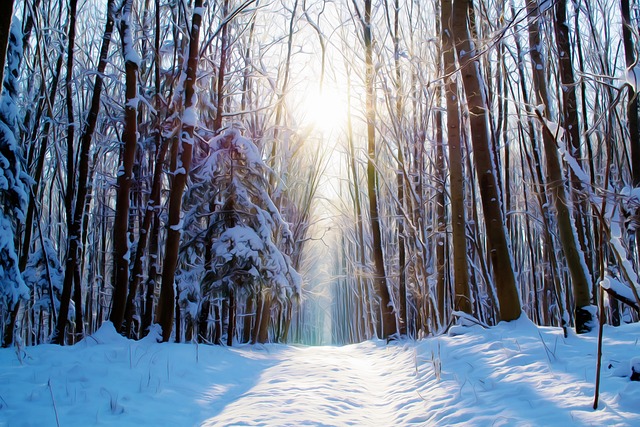A Guide to the wonders of winter walking:
Walking in the heart of winter is to experience life in a cycle of quiet slumber. In places with an absence of evergreen trees and plants, all appear to be dead or dormant. But the outside world is fully alive and only requires us to shift our perspective.
There are many gifts to be found, such as the revelation of the undulating patterns of the barren earth, showing off her curves… Or the appearance of giant nests high up in the trees… Or the golden glimmer of dry grasses dancing in the wind… Or a crystalline teardrop of ice seeping over frozen moss.
In winter, the sun has a gilded glow that streams dimly through windswept trees. The air is crisp and quiet… a perfect time to hear the faint whispers of the Wild Wood. Beauty surrounds us when we choose to see it.
However, winter also comes with challenges that necessitate us to take extra precautions.
Here are some things to keep in mind while walking/hiking in winter:
- When packing for a hike, take extra layers of warm clothing, gloves, and a hat. Thin, close-fitting layers are the best option to preserve your body heat. Add and remove layers as you feel warmer or colder. Be sure to remove layers when you heat up to prevent them from getting wet with sweat. When you reach [the summit, the river, etc.], you will need all the warm, dry clothes you have with you to be comfortable and enjoy the view. Hypothermia is a legitimate concern and is preventable with proper preparation.
- Drink plenty of water. It is essential to stay hydrated when hiking any time of year. It can be more challenging for some people in the winter because you may not be as motivated to drink cold water as in the summer when you’re hot and sweating. I like to bring an insulated water bottle with warm lemon water or herbal tea to help keep me warm.
- Weather can be very different ~ with even minimal elevation changes. For example, if you are traveling from town to a trailhead in the mountains, the trail or road conditions could be icy, snow-covered, or extremely muddy after a thaw. Be prepared not just in your backpack, but have emergency supplies in your vehicle, such as blankets, extra clothes, gloves and a hat, water, snacks, a first-aid kit, a cellphone charger, and a flashlight.
- Ice is ice. Ice doesn’t care how fancy your shoes are or how good the tread is on your boots. Ice is slippery and can be very dangerous. It also hurts like hell when you land hard on it. Ask me how I know. The safest way to traverse icy surfaces is with some type of footwear with spikes, microspikes, or full crampons. Check the conditions with the applicable land management agency before you go, and have a backup plan.
- Phones may be smart, but they don’t like very cold conditions. Be conservative with your cellphone power usage by putting it on low-power mode, closing all the open apps, dimming the screen brightness (the highest use of power), and keeping it turned off or on airplane mode… you know… so you can take fabulous photos of the winter wonderland!
And most importantly, have fun! The outdoors is a magical place in any season!
xoxCollin




